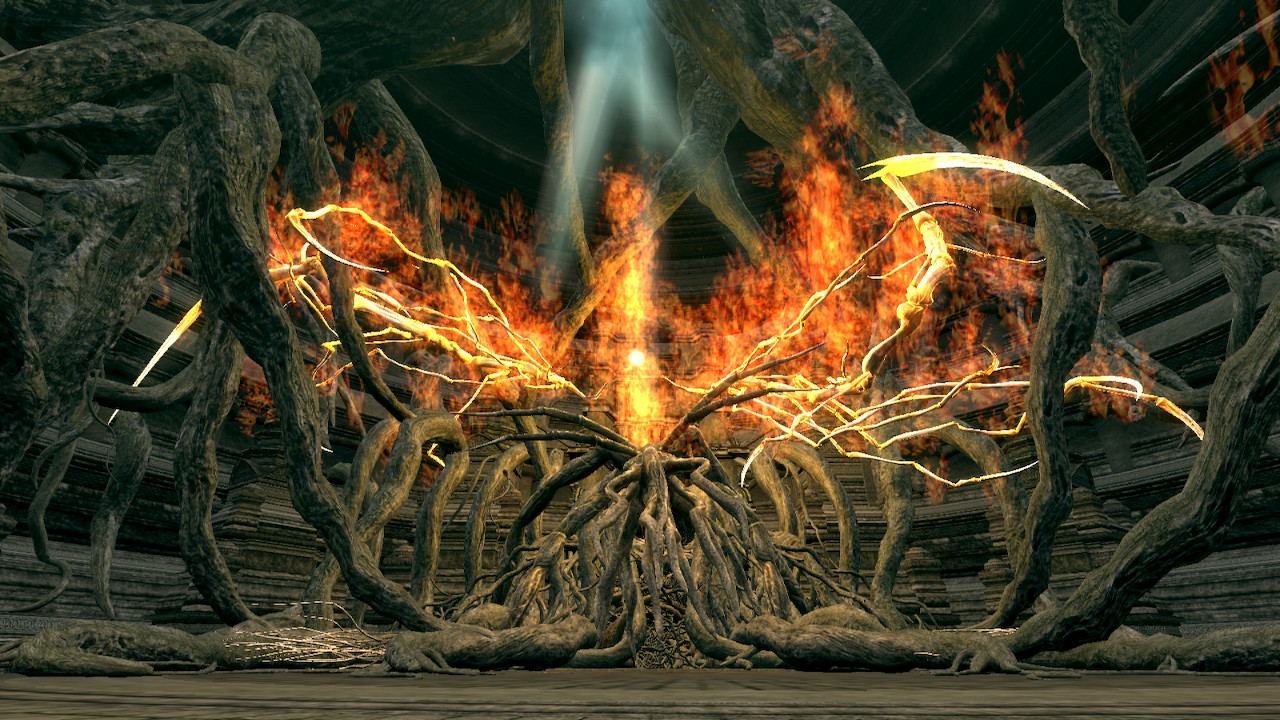The language used in the Japanese introduction to Dark Souls is simple, yet precise, when it comes to the powers that rule Lordran. Its English counterpart shows similar precision.
But then there was Fire and with fire came disparity. Heat and cold, life and death, and of course, light and dark. Then from the dark, They came, and found the Souls of Lords within the flame. Nito, the First of the Dead, The Witch of Izalith and her Daughters of Chaos, Gwyn, the Lord of Sunlight, and his faithful knights. And the Furtive Pygmy, so easily forgotten…
Fire is written with the kanji 火, the simplest it can be.
Light is 光, likewise a simple and common term. Darkness is 闇 and death is 死, very direct rather than euphemistic. These are simple words for primal concepts.
Then we find 混沌 – chaos. This word is not the simplest way to express “disorder or confusion,” but that is not the only way to define chaos.
The second character 沌 is not one of the kanji commonly in use in Japan – in the modern age, it’s mostly used in names. This archaic character is none the less the most precise way to write its meaning. It means primordial chaos – that which is unformed, undifferentiated, and complete in itself.
Let’s take it one step further.
混沌 is used in Daoist writings in Chinese. Transliterated hundun in English, it’s the state of the world before differentiation. For example:
Heaven and earth were perfectly joined [tung-t’ung 洞同], all was chaotically unformed [hun-tun wei p’u 渾沌為樸]; and things were complete [ch’eng 成] yet not created.
Huainanzi
Other examples (from Wikipedia, above) include “abundantly flowing, rippling, eddying, furious, dark and undifferentiated chaos.”
Note the watery metaphors – even the first character 混 has ‘water’ as its primary radical. The link of Lordran’s chaos to pyromancy may not be as contradictory as the leap from water to fire appears – pyromancy also permits the caster to affect life, in ways as varied as covering the body with water, attracting attention or captivating the mind, and producing toxins. (The latter two are weak arguments, as they can both be derived from fire – fascination, and poisonous smokes, respectively.)
The Bed of Chaos reinforces the impression. Its name in Japanese is 混沌の苗床 – the nursery, or seedbed, of chaos. It’s clear from the description in game that even after her fall to the Chaos Flame, the Bed – the Nursery – of Chaos proceeded to bring forth life in profusion.
The Witch of Izalith attempted to duplicate the First Flame from a soul, but instead created a distorted being of chaos and fire. Its power formed a bed of life which would become the source for all demons…
Soul of Bed of Chaos
Add her own children (at least eight!) to the picture, and primordial chaos is drawn clearly as the essence of life – cyclical and flowing, and linked, through the Witch’s imitation, to the First Flame.
